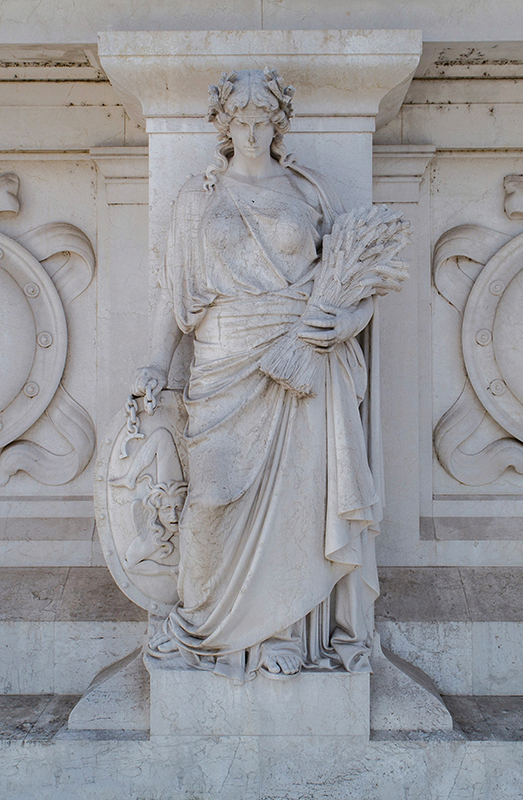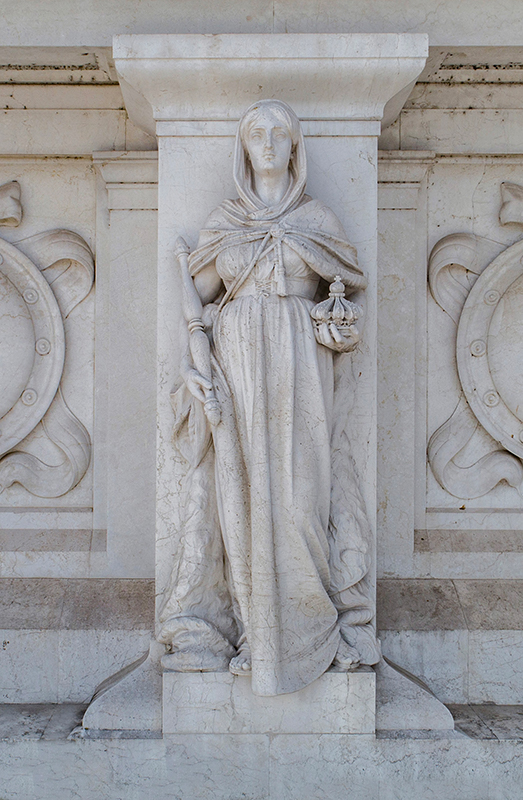An impressive public competition identifies sixteen artists for as many regions to be placed on the attic’s crowning element
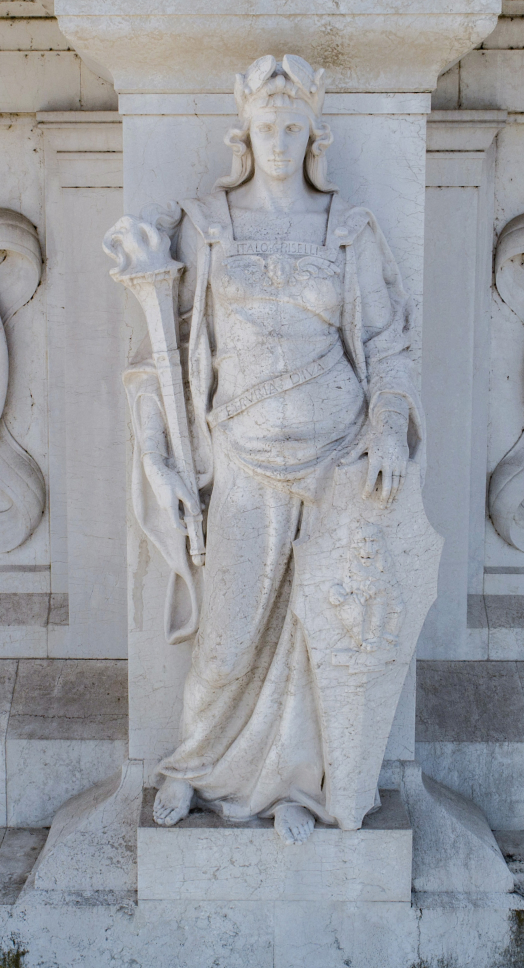
The cycle of the Italian regions intended for the attic of the crowning element of the Main Colonnade should consist of 16 female figures, 3.5m tall, each identified by one or more attributes: compared with today, in fact, Trentino and Venezia Giulia, still under Austrian rule as well as Valle d'Aosta and Molise, established only after World War II, were missing.
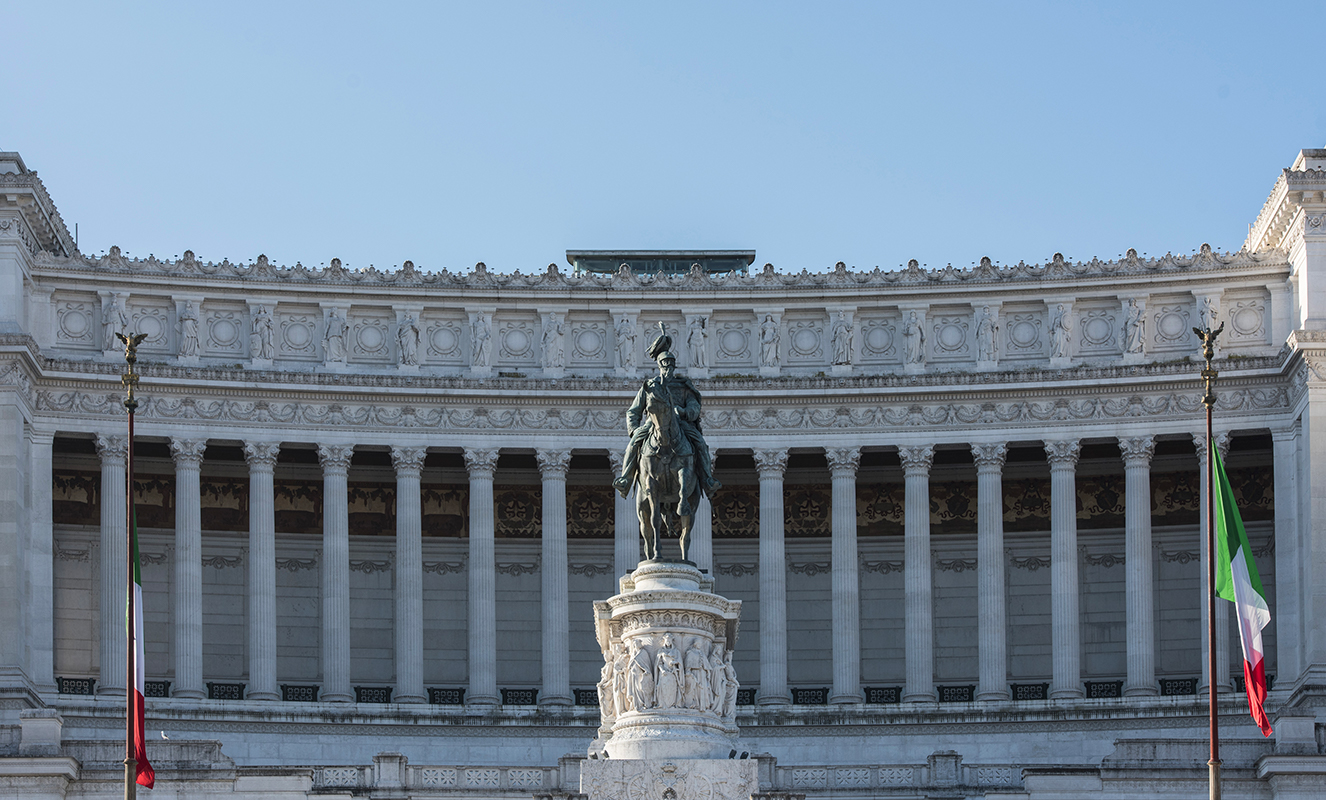
Pier Enrico Astorri from Emilia (1882-1926) represented Piedmont as a woman with a helmet on her head, a sword in one hand and a shield in the other. Lombardy by Emilio Bisi (1850-1920) has the iron crown of the Carolingians and is about to draw her sword. Veneto by Paolo Bartolini (1859-1930) holds the sceptre of the Most Serene Republic of Venice and the shield with the lion of San Marco.
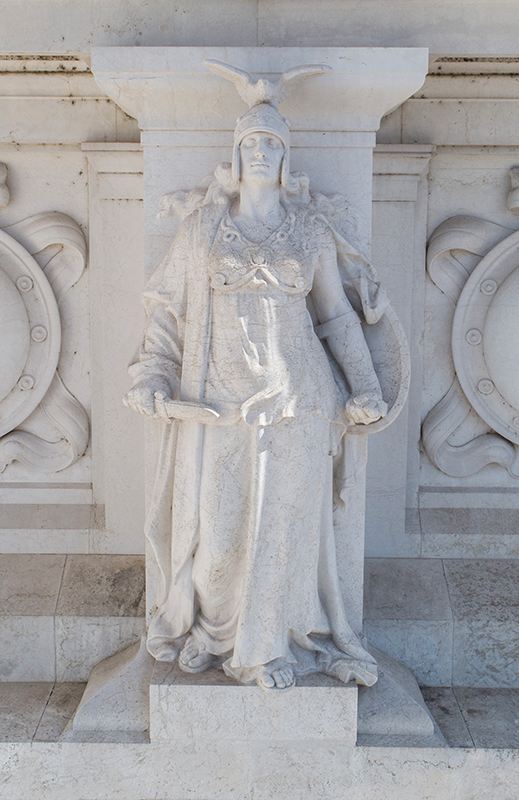
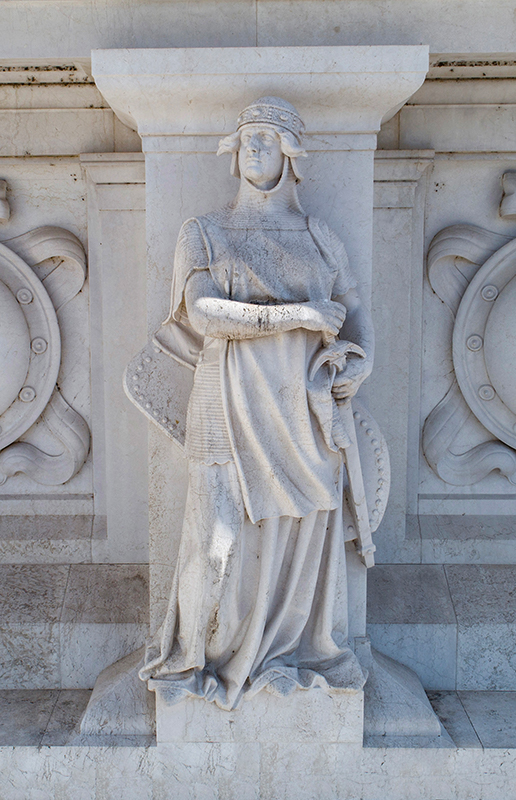
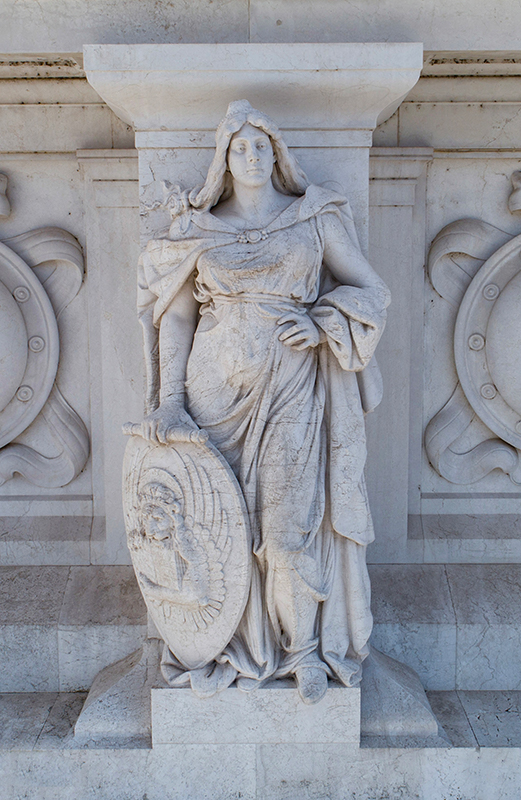
Liguria by Antonio Orazio Quinzio (1856-1928) wears a loricated armour with the cross of St. George, rests one hand on a rostrum and the other on the hilt of a dagger. Mauro Benini (1856-1915) represents Emilia with the Phrygian cap, Roman fasces and a large volume with the inscription "ALMA MATER STUDIORUM", a reference to the University of Bologna, the oldest in the Western world.
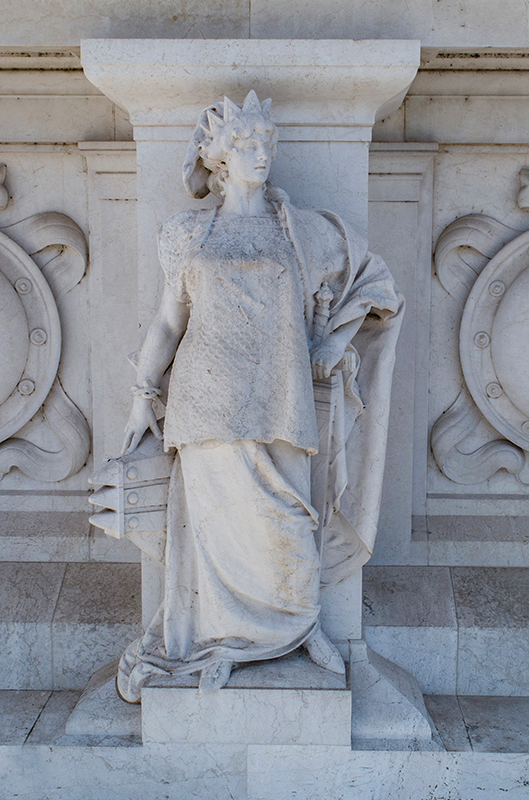
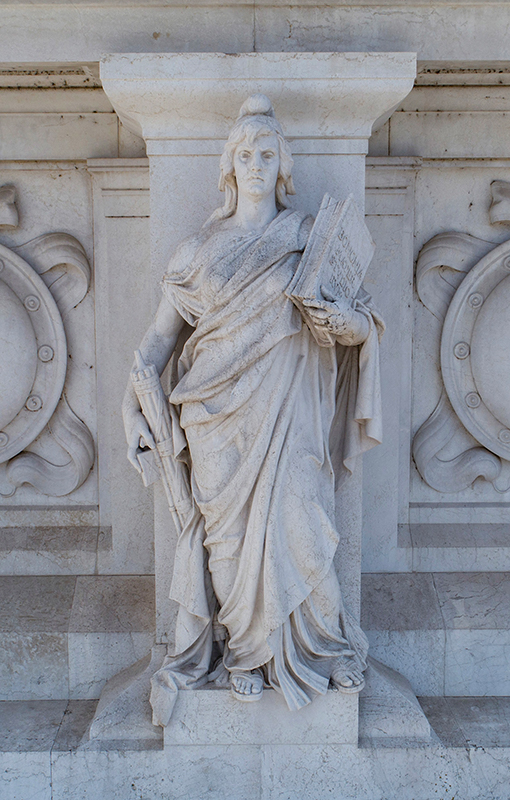
Tuscany by Italo Griselli (1880-1958) has a laurel wreath and wears a tight robe with two ribbons: the author's signature appears on the first, the writing "Etruria Diva" on the other. The right hand holds a torch, the left holds a shield with the Marzocco that is the heraldic symbol of the Florentine dominion, a lion with a paw on the shield with the lily, the insignia of the municipality.
Le Marche by Giuseppe Tonnini (1875-1954) are represented by a female figure dressed in a peplum and a cloak edged with lilies with a helm in the right hand and a musical instrument, a lyre, in the left. Umbria by Elmo Palazzi (1871-1915) has a veiled head, one hand on the hilt of a sword and the other with a patera, that is a cup used to offer drinks during ritual sacrifices.
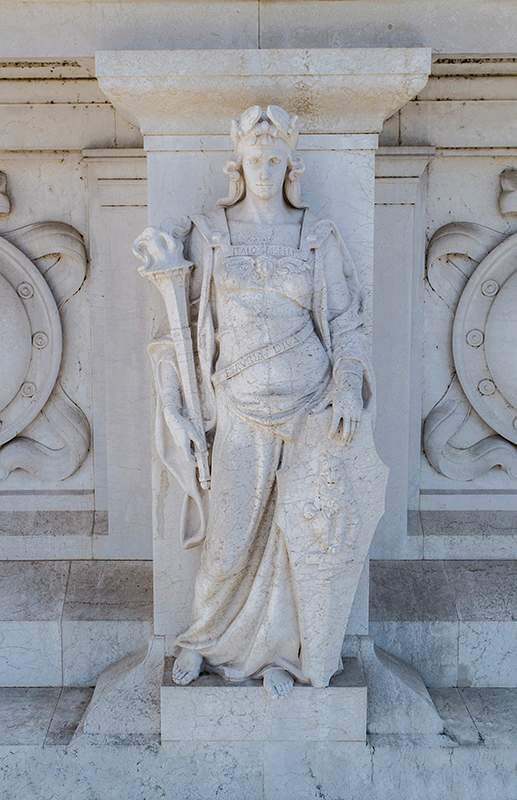
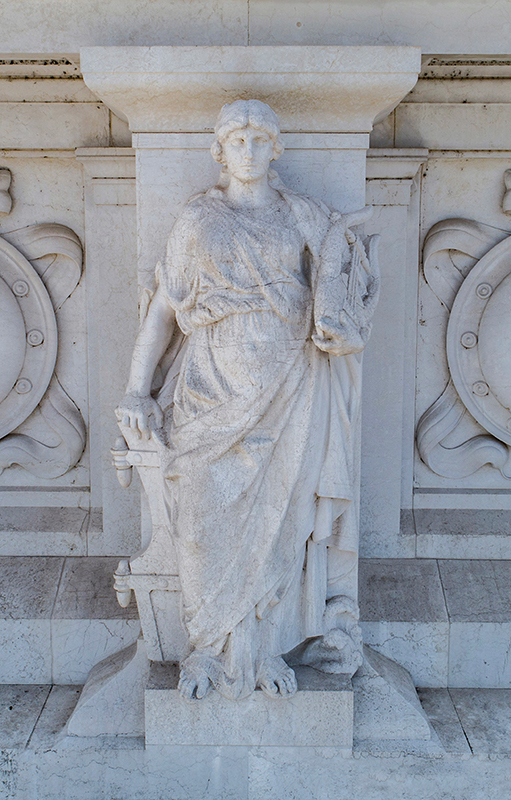
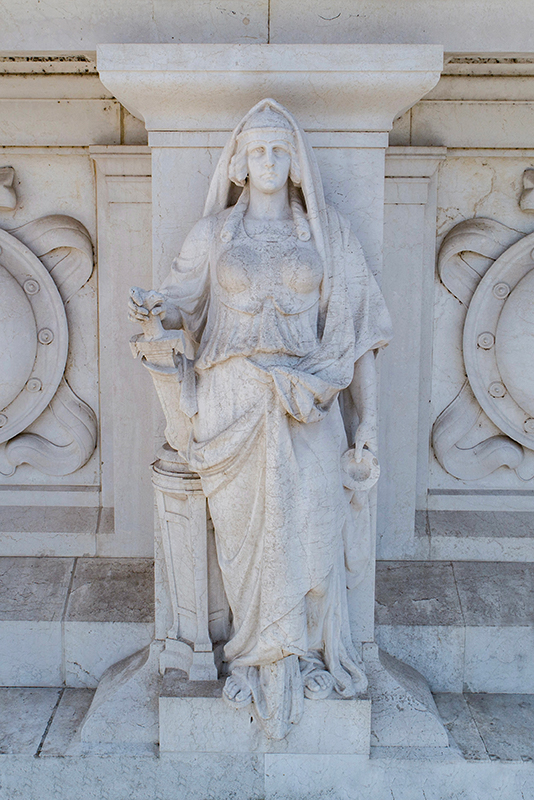
Lazio by Adolfo Pantaresi (1830-1927) wears a lorica, the armour of the ancient Romans, the right hand clutches an oar and the left a small winged Victory. Silvio Sbricoli (1864-1911) represents The Abruzzi with a cloak of leather with a lion's head, the shaft of the Samnites and saffron flowers. Campania by Gaetano Chiaramonte (1872-1962) has a laurel wreath on its head, the right rests on the hilt of a sword, the left holds a cornucopia full of fruit.
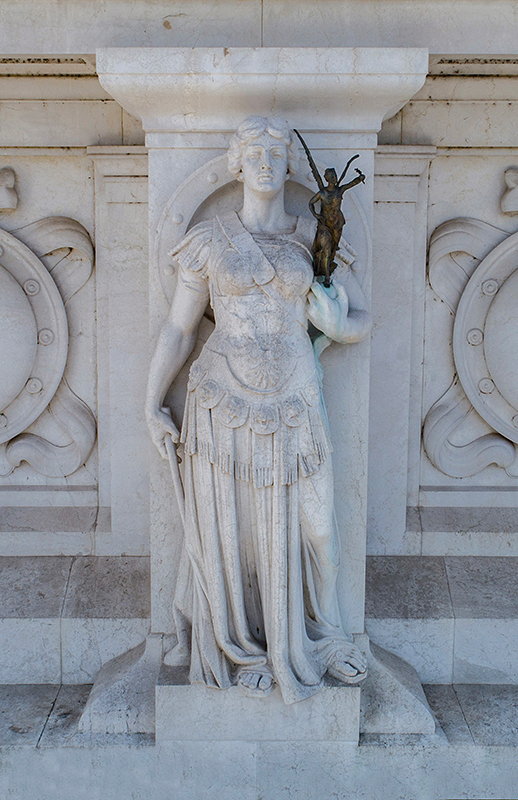
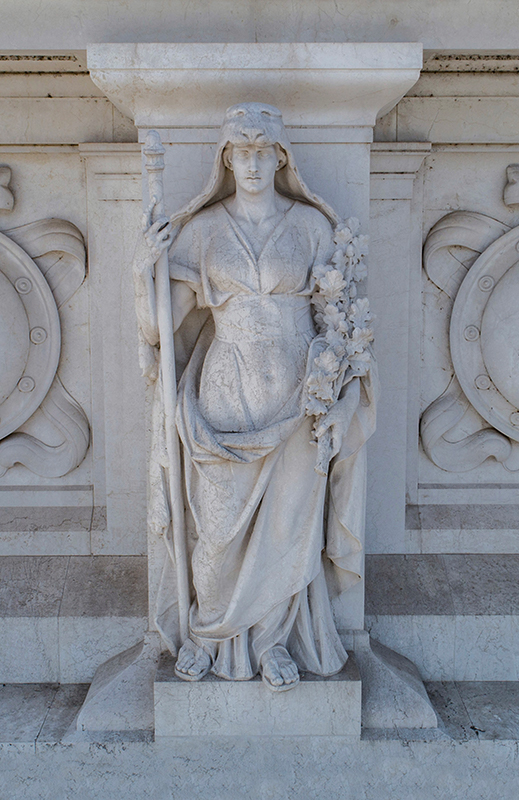
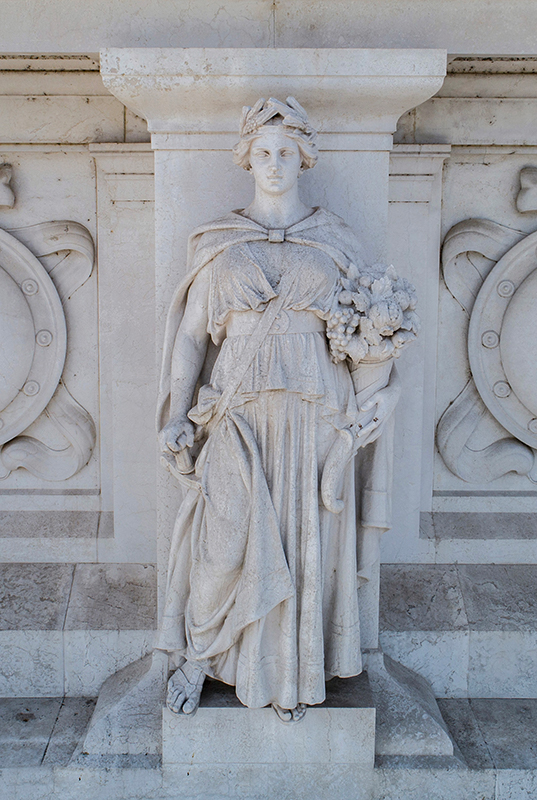
Apulia by Francesco Pifferetti, holds bunches of grapes in the right hand. Lucania (i.e. Basilicata) by Luigi Casadio holds the hilt of a sword with one hand and a stick with the other. Calabria by Giovanni Niccolini wears a sheepskin, with the right hand she holds a sword, with the left a shield with the image of the Gorgon.
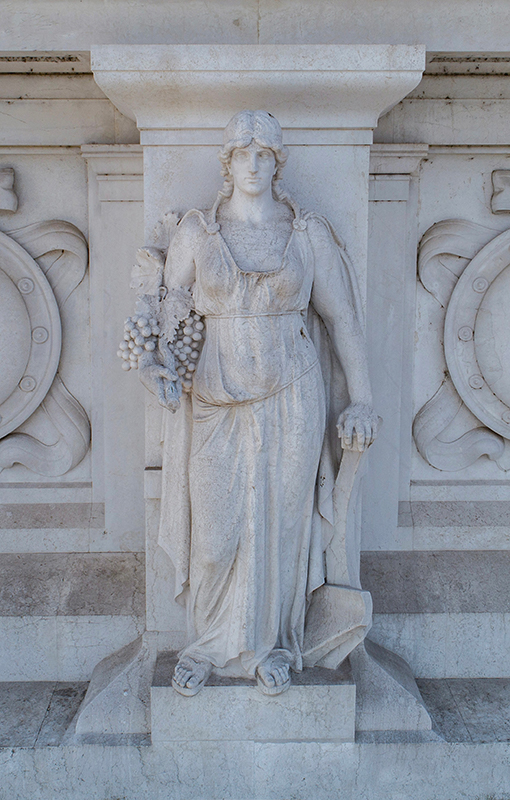

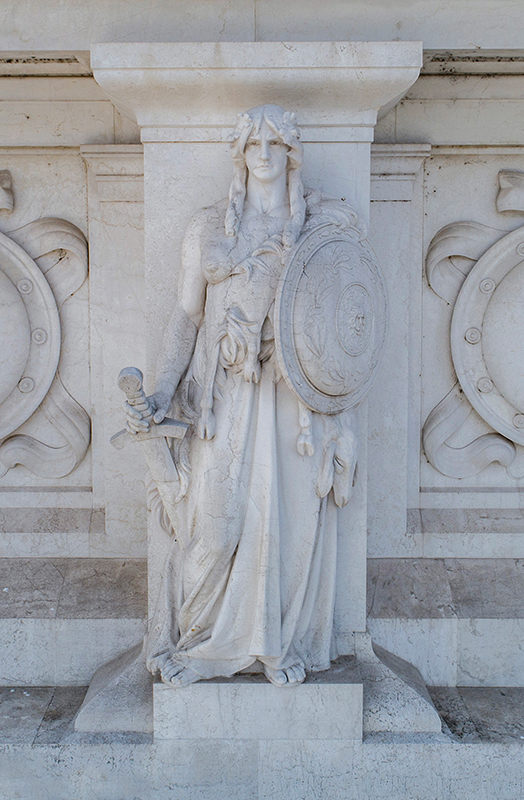
Sicily by Michele Tripisciano wears a crown of leaves and flowers on her head, has a bundle of wheat in one hand, a shield with the emblem of the Trinacria, i.e. a woman's head between three legs and three ears of wheat, in the other. Sardinia by Luigi Belli wears the regional folklore costume, in one hand she holds a sceptre, in the other the Savoyard crown with an ermine at her feet.
